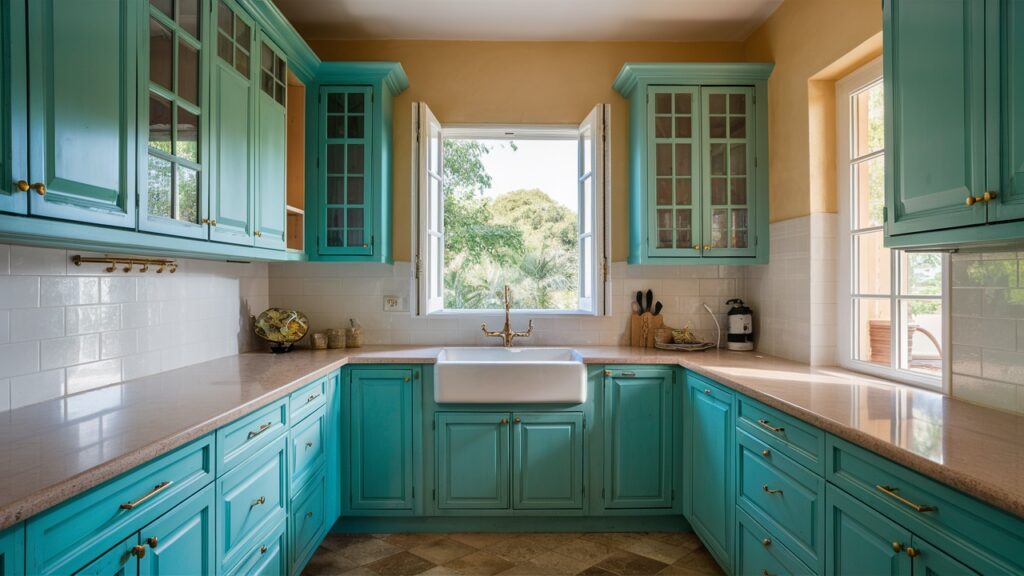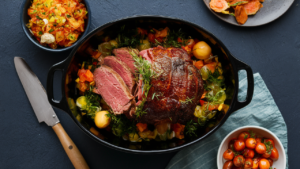To paint kitchen cabinets that are already painted, start by cleaning the surfaces thoroughly and sanding them lightly. Then, apply a primer before adding the new paint.
Painting kitchen cabinets that are already painted can breathe new life into your kitchen without the expense of a full renovation. Proper preparation is key to achieving a smooth, durable finish. Begin by cleaning the cabinets to remove any grease or grime that could interfere with paint adhesion.
Lightly sand the surfaces to create a texture that helps the new paint stick better. Priming the cabinets after sanding is crucial, as it ensures even coverage and long-lasting results. With the right steps, you can transform your kitchen cabinets and give your space a fresh, updated look.
Preparation Steps For A Flawless Finish
To achieve a flawless finish when painting already painted kitchen cabinets, begin by thoroughly sanding the existing paint to create a smooth surface. Next, apply a high-quality primer to ensure proper paint adhesion. Use a paint roller for even coverage and finish with a protective top coat for durability.
| Preparation Steps for a Flawless Finish |
| Assess the Current Condition: Before starting, evaluate the cabinets’ current condition. |
| Gather Your Materials: Collect all the necessary supplies for the painting process. |
Cleaning: The Foundation Of A Good Paint Job
Start by removing all grease and grime from the cabinets. Use a degreaser or a mixture of dish soap and warm water. Scrub the surfaces well with a sponge or cloth. Pay special attention to handles and corners where dirt accumulates. Rinse thoroughly to ensure no soap residue is left behind.
After cleaning, rinse the cabinets with clean water. This removes any remaining cleaning agents. Use a dry cloth to wipe down the surfaces. Make sure they are completely dry before proceeding. Moisture can affect the paint application.
Sanding: Creating The Perfect Base
|
Sanding Techniques for Smoothness: When painting over already painted cabinets, sanding is crucial. The right grit sandpaper ensures a smooth base. Sand twice to prep the surface for new paint. Priming after sanding improves paint adhesion. |

Primer: The Key To Longevity
Choosing the right primer is essential. A high-quality primer ensures the paint adheres well. It also helps to cover any stains or dark colors. Look for a primer that is designed for glossy surfaces. This will help the paint stick better.
Apply the primer in thin, even coats. Use a brush for the edges and a roller for larger areas. Make sure to let each coat dry completely. This will prevent any streaks or uneven spots. Sand lightly between coats for a smooth finish.
Choosing Your Paint
To paint kitchen cabinets that are already painted, begin by thoroughly cleaning the surfaces. Next, sand off the old paint and smooth out the wood for a fresh layer of paint. Don’t forget to prime the cabinets after sanding to ensure an even finish.
| When painting kitchen cabinets that are already painted, it’s crucial to properly prepare the surface. |
| Sanding off the old paint and smoothing the wood is essential for a new layer to adhere well. |
| If the cabinets have a glossy finish, light sanding or using a primer for glossy surfaces is recommended. |
| Choosing the right paint type like oil or latex and the perfect sheen is key for a successful outcome. |
| Priming the cabinets after sanding can improve the evenness and overall finish of the paint. |
Paint Application Techniques
Refresh the look of your kitchen cabinets by sanding the existing paint, applying a quality primer, and finishing with a durable topcoat. Ensure even coverage by using a brush for detailed areas and a roller for flat surfaces.
Brushes Vs. Rollers
Brushes are great for detailed work. They allow you to get into corners and grooves. Rollers, on the other hand, are perfect for flat surfaces. They provide a smooth finish and cover large areas quickly. Using both tools together can be very effective. Apply paint with a roller for the main surfaces. Then, use a brush for edges and corners.
Achieving A Professional Finish
A professional finish requires patience and the right technique. Always sand the cabinets before painting. This helps the new paint stick better. Use a high-quality primer to prepare the surface. Apply thin coats of paint to avoid drips and runs. Allow each coat to dry completely before adding another. This ensures a smooth and durable finish.
Drying And Curing: Patience Pays Off
Proper drying and curing are essential for a smooth and durable finish when repainting kitchen cabinets. Allow ample time between coats to ensure the best results.
| Drying and Curing: Patience Pays Off |
| Understanding Drying Times: Proper drying times are vital to avoid smudges or damage. |
| Factors Affecting Curing: Temperature, humidity, and paint type impact the curing process. |
Maintenance And Care
Keep your cabinets clean to maintain their beauty. Use a soft cloth and mild detergent. Avoid harsh chemicals that can damage the paint. Wipe spills immediately to prevent stains. Regularly dust the cabinets to remove dirt and grime. Ensure that you clean the handles and edges too. This helps in maintaining the overall look.
Minor scratches and chips can be fixed easily. Start by cleaning the area. Use a fine brush to apply matching paint. For deeper chips, fill the area with wood filler first. After it dries, sand it smooth. Then, apply the touch-up paint. This keeps your cabinets looking fresh and new.
Frequently Asked Questions
Can You Paint Over Previously Painted Cabinets?
Yes, you can paint over previously painted cabinets by sanding off the old paint and priming before applying a new coat.
Do You Have To Sand Off Old Paint Before Repainting Cabinets?
For a good-quality finish, it’s recommended to sand off old paint before repainting cabinets. Sanding helps the new paint adhere properly.
Can You Paint Over Painted Cabinets Without Sanding?
Yes, you can paint over painted cabinets without sanding by using a high-quality primer designed for glossy surfaces.
Do I Need Primer When Repainting Cabinets?
Yes, primer is recommended when repainting cabinets. It ensures better paint adhesion and a smoother finish.
Conclusion
Revitalize your kitchen by painting cabinets already painted. With proper sanding and priming, you can achieve a fresh, long-lasting finish without stripping. Elevate your space with a new color palette and a professional-looking upgrade. Follow these steps for a successful cabinet transformation.








